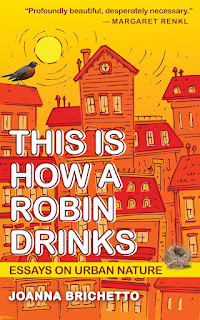I take a lot of pictures throughout the year and not all of them make it into a blog post. At the end of the calendar year, it’s a good time to reflect on the beauty of nature as well as share some of the extra pictures.
I believe that each day is an opportunity to find and appreciate something beautiful in the native plants and creatures of Georgia. In January I found this lichen at a rest stop in Georgia where many of the trees were struggling (lichen is able to grow when woody plants are not growing robustly). It was a beautiful specimen.
We usually get some of our first blooms in early February. Both of these plants - climbing fetterbush (Pieris phillyreifolia) and Eastern leatherwood (Dirca palustris) - are native more south of me in Georgia but I love having them.
 |
| Pieris phillyreifolia |
 |
| Leatherwood (Dirca palustris) |
I've been rescuing plants with the Georgia Native Plant Society for many years and it is always fun to see unusual things; in late March, one site had an active Canadian goose nest right next to where we walked. We also found some beautiful hybrid buckeyes (Aesculus pavia x sylvatica).
 |
April brought another nest, this one is a Carolina wren nest tucked into a group of unused quart pots. As far as I know, they all successfully fledged. This year was a great year for finding frogs (see my July #momentinnature for spring peepers) and in May this green tree frog was nestled into an Iris leaf blade next to the swimming pool.
The non-native hydrangeas get a lot of attention, but the sweetness of our native blossoms is not to be ignored. This one in June was a perfect mix of fertile (inner) and sterile (outer) flowers.
 |
| Hydrangea radiata |
In July, I found a new-to-me species of mountain mint in the most unexpected of places! This is Savanna mountain mint (Pycnanthemum flexuosum) and it is planted at the assisted living facility where my father-in-law lives. Each tiny flower is almost hidden by the long calyx. A good close-up photo can be found here. It is a Coastal Plain species.
 |
| Pycnanthemum flexuosum |
 |
| Hymenocallis occidentalis |
One of my seedling spiderlilies (Hymenocallis occidentalis) bloomed this year in August; the original parent was rescued many years ago in my county. This one is right next to the sidewalk and provided a spectacular display for over a week.
In September I was leading a hike on Stone Mountain when the group found this double-toothed prominent caterpillar on a native elm (Ulmus). It was my first time to see this species.
Our visit to Japan in October found a few of our native plants like this scarlet hibiscus (Hibiscus coccineus) being used in ornamental gardens. My post in October had a few more details.
 |
| Hibiscus in Japan garden |
This has been a significant year for deer damage and one morning in November my husband spotted this buck sleeping next to our front steps. One of my resolutions will be to do more to protect my plants from browsing so that I can enjoy more blooms and the pollinators have more nectar and pollen. Oh dear, looking back at last year's pictures, I see a similar one was in the same place.
As I mentioned in my December #momentinnature post, this year has been a little unusual for fall foliage. This red maple (Acer rubrum) - and it is a cultivar but I don't know which one - in downtown Athens, GA was full of colorful leaves in mid-December! Red maples are normally one of the earliest native trees to color and drop their foliage. It was a treat to see it.
Wishing you a good year in 2025 and more native plants and critters in your daily life.










































